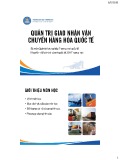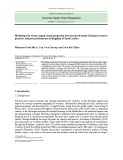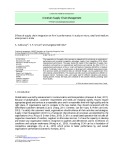
Lecturer: Dr. Truong Thi Kim Chuyen

CONTENT
I. Defining and the theorizing services
II. National and global stimuli to the growth of
services
III. Service outsourcing: benefits and drawbacks
for all?
IV. Limits to service export growth in the semi-
periphery and periphery
V. Geography of services
VI. Variety in the internationalization of
services

Group members
Thái Th y T ng Vyụ ườ
Đ B o Khánhỗ ả
Ph m Bình D ngạ ươ
Đoàn Anh Vi tệ
Nguy n Th Anh Thễ ị ư

11.1/ Defining and the theorizing
services

I. Defining and the theorizing services
Following Fisher – Clark thesis, services have been
defined:
Comprising what remains after agriculture, mining and manufacturing
are excluded. (1st defined way)
Production and consumption of intangible inputs and outputs. (2nd
defined way)











![Tài liệu học tập Quản trị bán hàng [mới nhất]](https://cdn.tailieu.vn/images/document/thumbnail/2025/20251009/lehanminhanh@gmail.com/135x160/59311759982292.jpg)







![Câu hỏi trắc nghiệm Nghiên cứu Marketing: Ôn tập kiểm tra [chuẩn nhất]](https://cdn.tailieu.vn/images/document/thumbnail/2025/20250925/kimphuong1001/135x160/29581758770138.jpg)






